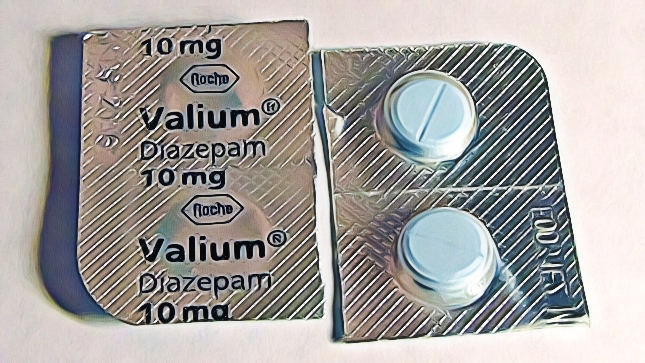One of the most-prescribed benzodiazepines for anxiety disorders is Valium (diazepam). It acts quickly and is considered long-lasting. Valium became FDA approved in 1963, and aside from anxiety, it’s also prescribed for a number of other medical conditions. This includes insomnia, muscle spasms, restless leg syndrome, seizure disorders, and alcohol withdrawal symptoms.
How Long Does Valium Stay in Your System
As your body starts to process Valium, it gets broken down. The substances that result in this breakdown are called metabolites. There is a wide majority of cases wherein the metabolites are detectable far longer than Valium itself. Typical metabolites include nordiazepam, oxazepam, and temazepam.

There is a high possibility of longer half-lives in the metabolites. Nordiazepam has a total half-life that runs up to a hundred hours. The substance’s half-life is somewhat prolonged because when multiple doses of Valium are taken over a certain period, it accumulates.
There are several ways that Valium, or at least its metabolites, are detected by the body:
- Blood
The duration being detectable in the blood can be anywhere from 6 hours to 2 days (48 hours). Given the much shorter window of detection, blood tests are one of the lesser-used test methods. It’s also one of the more invasive tests, which adds to why it’s not used as much. Certain settings call for it, however, such as forensic needs and clarity on positive urine test results.
- Hair
As is the case with most drugs, a hair follicle drug test can detect it for up to 3 months (90 days). Given the long detection window, this method can also be used to check on previous drug use. Be sure to disclose having been prescribed Valium for anxiety or some other condition, if that’s the case. Let the testers know even if it is not actively being taken anymore.
- Saliva
After it’s taken, it can be detected through a saliva test for up to 10 days. This kind of testing is seen as a more feasible alternative to a urine test meant to detect benzodiazepines like Valium.
There is a long detection window when it comes to saliva tests. Certain challenges come with this testing method, however. Side effects of Valium include either hypersalivation or a dry mouth, which can directly affect how a proper sample will be taken. Alternatively, these side effects can also cause any detectable substances in the oral fluid to be diluted.
Valium Half-Life
As a whole, there is a rather long elimination half-life. Half-life is basically how long it will take half a substance to exit a person’s system. There are several factors to consider. Depending on any number of them, the period can go from 30-56 hours.
Valium Side Effects
Valium has several effects both in the long-term and short-term sense. There is a wide spectrum in terms of the effect it can have on the user. It can go from anywhere to desirable or downright debilitating, all the way up to overdose.
There are several side effects that have gotten quite common over the years, such as:
- Changing appetite
- Confusion
- Decreasing respiratory rate
- Dry mouth
- Heart rate and rhythm changes
- Memory consolidation decreasing
- Nausea
- Problems with urination
- Reflexes become delayed
- Slurring speech
- Vision blurring
Short-Term Side Effects
There are possibly one or more negative side effects that it can cause, similar to other prescription medications. Taking it causes a direct impact on your central nervous system (CNS), which means it will end up taking effect in several ways. Typical side effects include being light-headed, feeling dizzy, getting drowsy, and fatigue.
The central nervous system is responsible for a person’s ability to control their muscles. Given that, Valium can also trigger ataxia, which considerably lowers coordination control. Overall, the intensity of the effects and how long they take can vary. If Valium has been prescribed to you, avoid activities that need coordination and focus, such as driving. If you need to operate heavy machinery for work, don’t do it while you’re taking Valium, either.
There are rare cases when more serious side effects manifest. When this happens, Valium can trigger the likes of irritability and memory impairment. Unconscious actions may also occur, such as sleep calling, sleep eating, and most dangerously, sleep driving.
Long-Term Side Effects
No matter what form Valium is in when it’s taken, there is a high risk of getting dependent on the drug. According to the National Alliance of Mental Illness, it can take daily use for just two weeks for Valium to form mental and physical dependence. That’s even with proper prescription and dosage. After long-term use, dependence will be even more prevalent.
Addiction to Valium can be developed through abuse/misuse (mixing the drug with other substances, taking more than the prescribed dose) or just downright illegal use (not having a prescription but using it anyway). Substance abuse can affect a person in a number of very harmful ways, and being addicted to Valium is much the same. Using Valium on a long-term basis can lead a person’s brain, liver, and cardiovascular system to incur permanent damage that can’t be reversed. Since Valium accumulates, abusing it will affect the judgment, memory, and cognition of a person.
Abusing Valium will lead to short-term symptoms, such as mood swings that go from agitation to sadness, and a marked lack of coordination. The effects immediately following Valium abuse are largely the same as when a person takes alcohol. Since it’s essentially meant for anxiety treatment, the “high” a patient gets is similar to the “high” that comes from heroin use, though the intensity is less. The patient who was prescribed Valium will get feelings of calm and relaxation, possibly even euphoria.
However, any attempts at getting a high from Valium that’s prescribed usually ends up with a manifestation of several serious side effects. Aside from the side effects previously mentioned, there’s also the matter of withdrawal.
Valium Withdrawal
Contrary to popular belief, individuals battling substance abuse are not the only ones who could end up dealing with withdrawal from Valium. Close supervision on a medical level is strongly recommended for any sort of withdrawal from benzodiazepines because they can be dangerous.

Benzodiazepines
The initial reason benzodiazepines like Valium were created was as a replacement for addictive, dangerous barbiturates. They fall under the Schedule IV controlled substances classification. Their safety profiles have improved over the years, though there is a tendency for addiction and physical dependence to still develop. That tendency is possible even if the Valium is taken by the patient exactly as it is prescribed.
Other medications and substances can end up interacting in a possibly dangerous way with Valium. This is why knowing exactly how long the effects last and how long it will actually stay in the body is key. That way, an accidental overdose, as well as the possibility of side effects lowers considerably.
Conclusion
Valium (Diazepam) can last in the body for several days. It is generally prescribed for anxiety and several conditions, but can possibly be addictive. The metabolites that result in it breaking down, can be detectable for much longer. However, simply ceasing to use it can trigger dangerous withdrawal symptoms, so medical supervision is advised.
Sources:




